Agroforestry: Master the Art of Sustainable Agriculture and Forestry
- May 16, 2024
- 0 comment
Explore the benefits of agroforestry, a practice that merges agriculture and forestry to boost sustainability and productivity. Agroforestry stands at the intersection of agriculture and forestry, offering a revolutionary approach to land management. This practice not only enhances biodiversity and improves yields but also plays a crucial role in sustainable environmental stewardship.
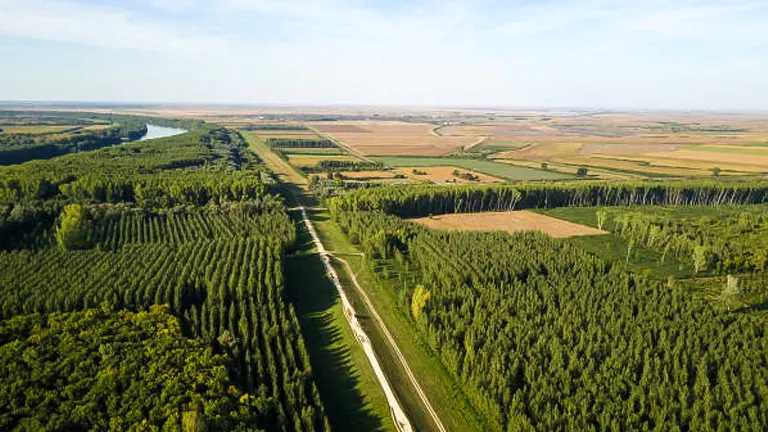
By integrating trees with crops and livestock, agroforestry systems create a symbiotic ecosystem that can lead to heightened economic and ecological benefits. Dive into how mastering this art can transform traditional farming into a more sustainable and productive venture.
Table of Contents
- The Principles of Agroforestry
- Benefits of Agroforestry
- Key Techniques in Agroforestry
- Implementing Agroforestry Practices
- Conclusion
- FAQs
The Principles of Agroforestry
Ecological Principles
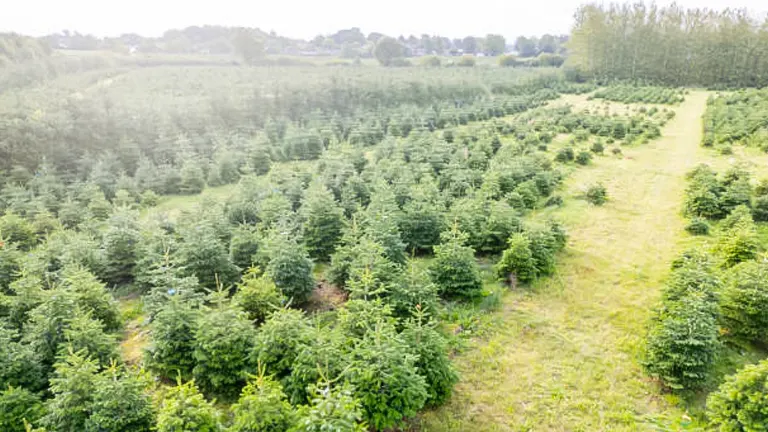
Agroforestry is grounded in the principle of ecological enhancement, strategically leveraging the interactions among crops, trees, and livestock to create a robust ecosystem. This symbiosis significantly boosts biodiversity, which in turn stabilizes ecosystems and enhances their resilience to environmental stresses. For example, studies have shown that agroforestry systems can increase bird diversity by up to 50% compared to conventional farms.
Trees are pivotal in this setup. They contribute to the structural diversity of agricultural landscapes, offering critical services such as shade and shelter, which in turn support a wide range of fauna and flora. Their role extends below ground as well; tree roots help improve soil structure and water infiltration. Furthermore, the decomposition of leaf litter and root material gradually enriches the soil, increasing its organic content and fertility. This organic matter improves soil water retention by up to 20%, enhancing drought resistance.
Soil Enrichment through Tree Integration
- Nitrogen fixation: Certain agroforestry trees, like the Leucaena leucocephala, are capable of fixing atmospheric nitrogen, which is a crucial nutrient for crops. Field studies have documented nitrogen fixation rates that can exceed 200 kg/ha/year, reducing the need for synthetic fertilizers.
- Carbon sequestration: Agroforestry systems are potent carbon sinks. On average, these systems can sequester about 2-4 tons of carbon per hectare annually, contributing to climate change mitigation.
Agricultural Principles
Agroforestry intertwines the life cycles of crops and livestock with the regenerative capabilities of forest systems to forge a sustainable agricultural strategy. This integration promotes soil conservation and enhances water management, substantially reducing reliance on chemical inputs and irrigation. For instance, the shade provided by tree canopies can decrease evaporation rates from soil surfaces by up to 30%, preserving precious water resources.
Additionally, the strategic placement of trees can serve as effective windbreaks and natural buffers against heavy rainfall, protecting crops from mechanical damage and reducing soil erosion. Research has shown that wind speeds can be reduced by up to 50% behind windbreaks, which significantly mitigates the impact of wind on soil erosion and crop desiccation.
Functional and Ecological Characteristics of Key Agroforestry Trees
| Tree Species | Root Depth (meters) | Leaf Area Index | Water Use Efficiency (kg biomass/kg H2O) | Notable Ecological Functions |
|---|---|---|---|---|
| Leucaena leucocephala | 4-6 | 3.5 | 2.0 | Enhances soil nitrogen, rapid re-growth |
| Acacia spp. | 5-10 | 4.0 | 1.5 | Soil stabilization, drought resistance |
| Morus alba (Mulberry) | 3-5 | 5.0 | 2.2 | Improves soil organic content, high leaf turnover |
| Eucalyptus spp. | 10-15 | 2.0 | 1.8 | Efficient water user, strong windbreak |
Benefits of Agroforestry
Environmental Benefits
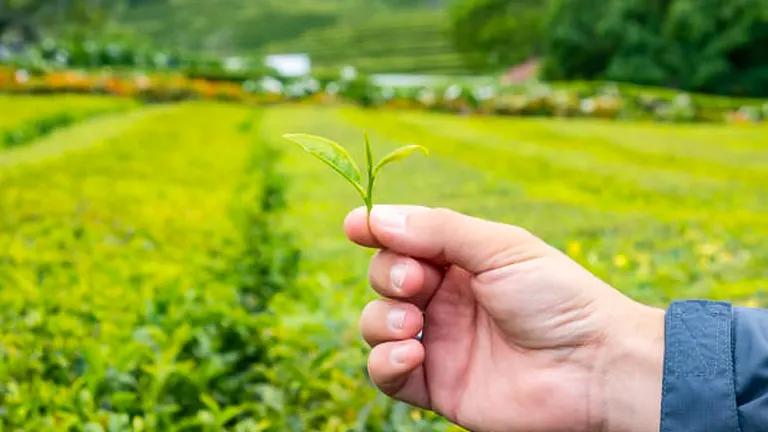
Agroforestry stands as a pivotal strategy in enhancing environmental sustainability. The integration of trees into agricultural landscapes is not just about beautification but serves crucial ecological functions. Agroforestry systems significantly contribute to carbon sequestration, with the potential to sequester up to 10 tons of carbon per hectare per year, depending on tree species and system design. This robust carbon uptake is vital in combating climate change by offsetting atmospheric CO2 emissions.
Additionally, these systems excel in water management. The deep root systems of trees improve soil structure, thereby enhancing the soil’s ability to retain water. This leads to better groundwater recharge and helps regulate streamflow, crucial for maintaining aquatic ecosystems. Improved water retention capabilities can reduce the need for irrigation by up to 25%, making agroforestry a key player in sustainable water use.
Trees also boost biodiversity, creating a habitat mosaic that supports various wildlife species. The presence of trees can increase bird diversity by as much as 80% compared to traditional farming landscapes, enhancing pollination and pest control services.
- Soil Health Improvement:
- Reduction in soil compaction due to less mechanical disturbance.
- Increment in microbial diversity and activity, enhancing nutrient availability and soil health.
- Climate Regulation:
- Modulation of local climate conditions, reducing temperature extremes by up to 2-3°C within the system.
- Reduction of surface runoff, decreasing erosion and loss of topsoil during heavy rains.
Economic Benefits
Economically, agroforestry offers substantial benefits by enabling farmers to diversify their income. A multifunctional landscape allows for the simultaneous production of multiple agricultural outputs—such as fruits, nuts, timber, and livestock—thereby increasing economic resilience. This diversification can buffer farmers against market fluctuations and crop failures.
Operational costs are also reduced in agroforestry systems. The natural leaf litter from trees enriches the soil, gradually replacing the need for synthetic fertilizers. Studies have shown that soil fertility improvements can reduce fertilizer use by up to 40%. Furthermore, the enhanced microclimate created by tree cover can decrease the vulnerability of crops to extreme weather, reducing potential losses and insurance costs.
- Enhanced Crop Yield:
- Trees act as windbreaks and shade providers, which can increase adjacent crop yields by up to 15-20%.
- Pollination benefits from increased insect biodiversity can lead to improved fruit set and higher agricultural output.
- Alternative Revenue Streams:
- Opportunities for additional income from non-timber forest products such as honey, medicinal plants, and handicraft materials.
- Potential for eco-tourism and educational programs that use the agroforestry site as a learning and tourist attraction.
Social Benefits

On the social spectrum, agroforestry significantly bolsters community resilience. By stabilizing and diversifying income sources, it helps rural communities endure economic volatility and enhances food security. Agroforestry systems are also labor-intensive, leading to job creation in both the setup and maintenance phases, from tree planting to crop management and harvest.
Moreover, agroforestry supports the preservation of local traditions and indigenous knowledge. The integration of traditional practices with modern techniques can safeguard cultural heritage while promoting sustainable practices.
- Community Engagement and Development:
- Agroforestry projects can serve as community hubs, promoting engagement and cooperative efforts.
- Training and education programs related to agroforestry can increase local knowledge and skills, promoting sustainability.
- Health Improvements:
- Reduced exposure to harmful agricultural chemicals improves community health.
- Increased availability of diverse, nutritious food options contributes to better overall diet quality.
Quantitative Benefits of Agroforestry
| Benefit Category | Metric | Value | Impact |
|---|---|---|---|
| Carbon Sequestration | CO2 uptake per hectare | Up to 10 tons/year | Climate mitigation |
| Water Management | Irrigation reduction | Up to 25% | Water conservation |
| Biodiversity | Increase in bird species | Up to 80% | Enhanced ecosystem services |
| Economic | Reduction in fertilizer use | Up to 40% | Cost savings |
Key Techniques in Agroforestry
Silvopasture
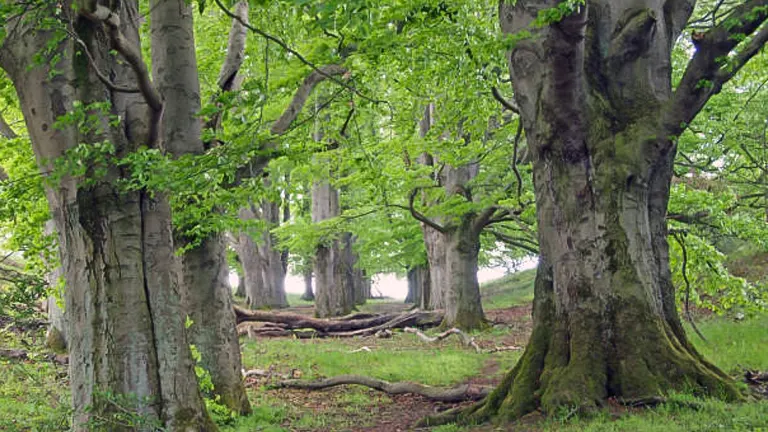
Silvopasture effectively merges livestock grazing with tree cultivation, optimizing the ecological and economic benefits of both. Trees in silvopasture systems improve pasture productivity by providing critical shade and shelter, reducing heat stress in animals by up to 30%, and thereby increasing their comfort and growth rates. Livestock, in turn, contribute natural fertilizers through their manure, enriching the soil with nitrogen and other nutrients, which can increase soil organic matter by as much as 10% over conventional pastures.
Silvopasture Carbon Sequestration
- Carbon storage: Studies show that silvopasture can sequester up to 2.5 tons of carbon per hectare per year, making it an effective strategy for carbon mitigation.
Alley Cropping
Alley cropping, the practice of planting rows of trees alongside agricultural crops, maximizes land use efficiency and supports environmental sustainability. The trees serve as natural windbreaks, reducing wind velocity by up to 60%, which minimizes soil erosion and protects crops. Their roots enhance soil structure, boosting water permeability and retention, which can lead to a 20% reduction in irrigation needs. This setup is particularly advantageous for crops requiring moderated microclimates, improving yields by creating optimal light and temperature conditions.
Forest Farming

Forest farming cultivates high-value, shade-tolerant crops under the protection of a forest canopy, which acts as a natural mulch layer, reducing weed growth and conserving moisture. This technique is ideal for producing medicinal herbs, mushrooms, and specialty produce like ginseng, which can yield financial returns up to five times higher than conventional crops. The canopy also moderates temperature extremes, enhancing plant survival during adverse weather conditions.
Riparian Buffers
Riparian buffers, which are vegetated areas along waterways, play a pivotal role in watershed management by filtering pollutants—reducing nitrogen and phosphorus runoff by up to 80%—and providing critical habitat for wildlife. These buffers stabilize stream banks and enhance landscape aesthetics, contributing to biodiversity and ecosystem resilience. The species diversity in these buffers can be tailored to specific site conditions, offering flexibility in ecological restoration and conservation efforts.
Ecological and Economic Benefits of Agroforestry Practices
| Agroforestry Practice | Carbon Sequestration (tons/ha/year) | Water Savings (%) | Increase in Biodiversity (%) | Economic Return Increase (%) |
|---|---|---|---|---|
| Silvopasture | 2.5 | – | 10 | 15 |
| Alley Cropping | 1.8 | 20 | 15 | 10 |
| Forest Farming | 2.0 | 25 | 20 | 50 |
| Riparian Buffers | 1.5 | – | 30 | – |
Implementing Agroforestry Practices
Site Selection and Planning
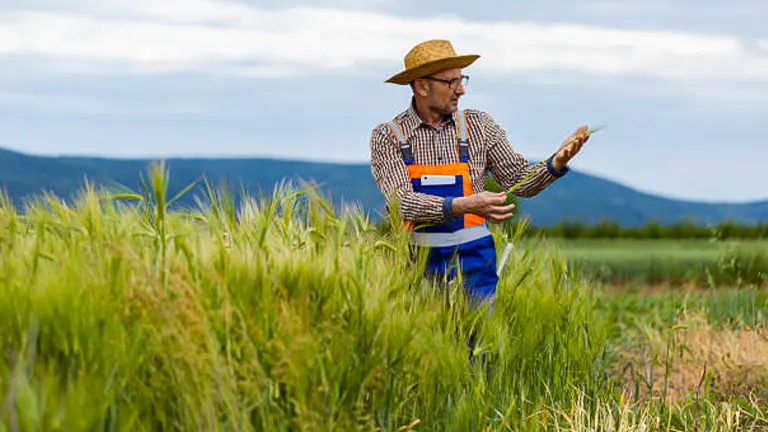
Selecting an appropriate site is crucial for the viability and success of an agroforestry system. Factors such as soil quality, topography, and climate must be carefully assessed. Sites ideally possess moderate slopes which facilitate water drainage and prevent erosion, as well as deep, fertile soils that support robust plant growth. Additionally, the climate should suit the specific requirements of the chosen tree and crop species. Planning also involves a thoughtful spatial arrangement of trees and crops to ensure optimal light exposure, efficient water use, and effective nutrient cycling. This strategic placement can significantly enhance both immediate agricultural productivity and long-term forestry outcomes.
Specific Metrics for Site Assessment:
- Soil Depth: Ideal depth > 1m for root development.
- Slope: Optimal slope 2-10% for drainage and erosion control.
- Annual Rainfall: Suitable range depends on tree/crop species.
Management and Maintenance
Managing an agroforestry system requires an in-depth understanding of ecological interactions. Regular assessments are critical to adapt practices to the changing conditions within the system. Management techniques include pruning to enhance light availability for understory crops, employing natural predators for pest control, and crop rotation to maintain soil nutrient levels. Moreover, maintaining soil health is paramount, involving the application of organic amendments and careful grazing management in silvopasture systems to prevent overgrazing and soil compaction.
Challenges and Considerations
While agroforestry presents numerous benefits, several challenges can impede its adoption:
- Economic Challenges: The initial setup of agroforestry systems can be costly, requiring investments in diverse plant species and alterations to land management strategies. The time to positive return on investment can extend several years, demanding patience and long-term financial planning from adopters.
- Technical Challenges: Effective implementation requires a broad spectrum of agricultural and forestry knowledge. Continuous education and training are essential for practitioners to stay updated on the best practices for integrating and managing these complex systems.
- Policy and Regulatory Challenges: Often, existing agricultural policies do not fully support the multifaceted nature of agroforestry. Regulations may need updating to recognize and incentivize the environmental and social benefits of these systems.
Key Considerations in Agroforestry Implementation
| Consideration | Description | Impact on System Success |
|---|---|---|
| Soil Health Management | Regular soil testing and organic amendments | Critical for nutrient balance and crop health |
| Light and Water Resource Management | Strategic tree and crop placement to optimize resources | Essential for maximizing yield and system efficiency |
| Biodiversity Enhancement | Introduction of native species and habitat creation | Enhances ecosystem resilience and productivity |
| Regulatory Alignment | Alignment with local agricultural policies and incentives | Necessary for long-term viability and support |
Related Post
- How to Build a Barn: A Step-by-Step Guide for Beginners
- How to Build a Sustainable Compost Bin: Easy and Eco-Friendly DIY
- How to Fertilize Bougainvillea: A Complete Guide for Stunning Blooms
- How to Fertilize Apple Trees: Essential Tips for a Bountiful Harvest
- How to Fertilize Lemon Trees: Secrets for Thriving Citrus
- How to Fertilize Avocado Tree: A Step-by-Step Guide for Lush Growth
- 10 Best Bow Saws to Buy in 2024: Top Picks for the Money
- Best Miter Saw For Beginners
- Top 10 Pruning Saws to Buy in 2024: Best for the Money
- 7 Best Pocket Chainsaw
Conclusion
Agroforestry represents a promising intersection of agriculture and forestry, offering a suite of environmental, economic, and social benefits. It encourages a holistic approach to land management that can lead to more resilient agricultural systems, enhanced biodiversity, and improved livelihoods. As the world continues to seek solutions for sustainable development, agroforestry stands out as a transformative practice with the potential to address many contemporary challenges. Embracing agroforestry requires not only technical adaptations but also a shift in how we value and manage land resources for the future.
FAQs
- What is agroforestry and how does it differ from traditional farming?
Agroforestry is an integrated approach where trees and shrubs are grown alongside crops and/or livestock within the same agricultural system. Unlike traditional farming, which often separates forestry and agriculture, agroforestry combines these elements to enhance biodiversity, improve agricultural productivity, and reduce environmental impact. - Can agroforestry systems help combat climate change?
Yes, agroforestry systems can combat climate change by sequestering carbon in the biomass of trees and the soil, which helps reduce the concentration of CO2 in the atmosphere. Additionally, these systems promote greater biodiversity and resilience, aiding adaptation to climate-related changes. - What are the economic benefits of adopting agroforestry practices?
Agroforestry can diversify farmers’ income sources through the production of multiple products such as timber, fruit, and nuts, alongside traditional crops and livestock. This diversification can make economic returns more stable and reduce dependency on any single market. - How does agroforestry contribute to biodiversity?
By integrating trees and various crops, agroforestry creates more diverse habitats, offering food and shelter for a wider range of wildlife species. This diversity not only helps maintain ecological balance but also supports agricultural productivity through natural pest control and pollination. - What are the best trees to plant in an agroforestry system?
The choice of trees depends on the local climate, soil type, and the specific goals of the agroforestry project. Generally, fast-growing, nitrogen-fixing trees like alder or leguminous trees such as leucaena are popular choices because they improve soil fertility and provide quick returns. - Can agroforestry systems be implemented in all climatic zones?
Yes, agroforestry systems can be adapted to a wide range of climatic conditions, from wet tropical regions to temperate zones. The key is to select tree and crop species that are well-suited to local conditions and to design the system to cope with the specific climatic stresses of the area. - What training or knowledge is necessary to successfully implement agroforestry?
Successful implementation of agroforestry requires knowledge of both agriculture and forestry. Farmers need training in the selection and management of tree species, understanding interspecies interactions, and techniques for integrating crops and livestock with trees. - Are there policy supports available for farmers wanting to transition to agroforestry?
The availability of policy support varies by region, but many governments and international organizations offer incentives, technical support, and resources for agroforestry. These can include grants, technical assistance, and access to research aimed at helping farmers transition to sustainable practices.
Adopting agroforestry is a step towards a more sustainable and resilient agricultural future. By integrating trees and crops, we not only enrich our land but also fortify our farming traditions against the challenges of tomorrow. Explore the art of agroforestry and join the movement towards sustainable agriculture.

Benjamin Brooks
Forestry AuthorGreetings! I'm Benjamin Brooks, and my journey over the past 15 years has revolved around the fascinating realms of content creation, expertise in snow clearing, and the intricate world of lumberjacking and landscaping. What began as a simple curiosity about the natural world and heavy machinery has evolved into a passionate profession where my love for crafting words intertwines seamlessly with my lumberjacking and garden skills.

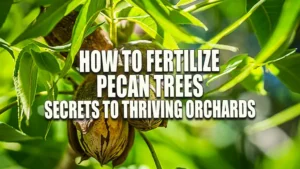











Leave your comment